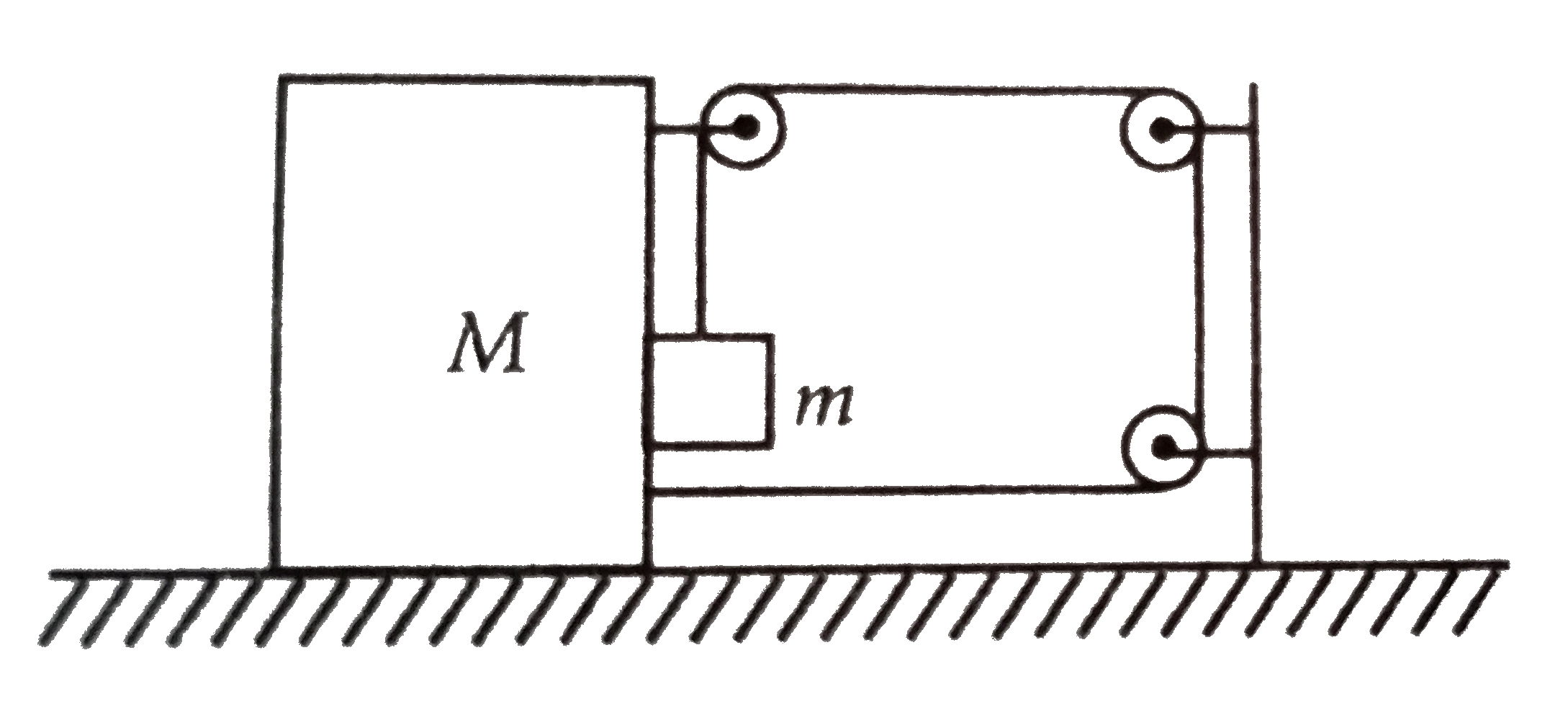A balloon of gross weight w newton is falling vertically downward with a constant acceleration a(<g) . The magnitude of the air resistance is :
w
w(1+ag)
w(1−ag)
wag
The correct Answer is:C
To solve the problem of finding the magnitude of air resistance acting on a balloon falling with a constant acceleration less than the acceleration due to gravity, we can follow these steps:
1. Identify the Forces Acting on the Balloon:
- The balloon has a weight W acting downwards due to gravity.
- There is an upward force due to air resistance, which we will denote as Fa.
2. Write the Equation of Motion:
- Since the balloon is falling with a constant acceleration a (where a<g), we can apply Newton's second law of motion:
Fnet=m⋅a
- The net force acting on the balloon can be expressed as:
Fnet=W−Fa
- Therefore, we can write:
W−Fa=m⋅a
3. Express Mass in Terms of Weight:
- The weight W is related to mass m by the equation:
W=m⋅g⇒m=Wg
4. Substitute Mass into the Equation:
- Substitute m into the equation of motion:
W−Fa=(Wg)⋅a
5. Rearrange to Solve for Air Resistance:
- Rearranging the equation to isolate Fa:
Fa=W−(Wg)⋅a
6. Factor Out W:
- Factor W out of the equation:
Fa=W(1−ag)
7. Final Expression for Air Resistance:
- Thus, the magnitude of the air resistance Fa is:
Fa=W(1−ag)
Conclusion:
The magnitude of the air resistance acting on the balloon is Fa=W(1−ag).
---
- The balloon has a weight W acting downwards due to gravity.
- There is an upward force due to air resistance, which we will denote as Fa.
- Since the balloon is falling with a constant acceleration a (where a<g), we can apply Newton's second law of motion:
Fnet=m⋅a
- The net force acting on the balloon can be expressed as:
Fnet=W−Fa
- Therefore, we can write:
W−Fa=m⋅a
- The weight W is related to mass m by the equation:
W=m⋅g⇒m=Wg
- Substitute m into the equation of motion:
W−Fa=(Wg)⋅a
- Rearranging the equation to isolate Fa:
Fa=W−(Wg)⋅a
- Factor W out of the equation:
Fa=W(1−ag)
- Thus, the magnitude of the air resistance Fa is:
Fa=W(1−ag)
The magnitude of the air resistance acting on the balloon is Fa=W(1−ag).
Similar Questions
Knowledge Check
Assuming all the surface to be frictionless. The smaller block m is moving horizontally with acceleration a and vertically downwards with acceleration a. Then magnitude of net acceleration of smaller block m with respect to ground
 A2√5mg(5m+M)B2mg(5m+M)C7√5gDnone of these
A2√5mg(5m+M)B2mg(5m+M)C7√5gDnone of these
A paritcal of mass 10g moves along a circle of radius 6.4cm with a constant tangennitial acceleration. What is the magnitude of this acceleration . What is the magnitude of this acceleration if the kinetic energy of the partical becomes equal to 8×10−4J by the end of the second revolution after the beginning of the motion?
View SolutionA man in a balloon throws a stone downwards with a speed of 5m/s with respect to balloon. The balloon is moving upwards with a constant acceleration of 5m/s2. Then velocity of the stone relative to the man after 2 seconds is.

View SolutionA balloon is descending with a constant acceleration a, less than the acceleration due to gravity g. The weight of the balloon, with its basket and contents, is w. What weight w, should be released so that the balloon will begin to accelerate upward with constant acceleration a? Neglect air resistance.
View SolutionThe ratio of the weight of a man in a stationary lift and when it is moving downward with uniform acceleration ‘ a ’ is 3:2. The value of ‘ a ’ is ( g - Acceleration due to gravity of the earth)
View SolutionA balloon rises from rest on the ground with constant acceleration g/8. A stone is dropped from the balloon when the balloon has risen to a height of (H). Find the time taken by the stone to reach the ground.
View SolutionA body is projected vertically upward with an initial velocity u. If acceleration due to gravity is g, find the time for which it remains in air.
View SolutionIf the container filled with liquid gets accelerated horizontally or vertically, pressure in liquid gets changed. In liquid (ay) for calculation of pressure, effective g is used. A closed box horizontal base 6m by 6m and a height 2m is half filled with liquid. It is given a constant horizontal acceleration g/2 and vertical downward acceleration g/2.
The angle of the free surface with the horizons is equal to
View Solution
